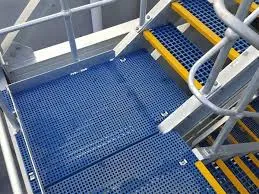
-
 Afrikaans
Afrikaans -
 Albanian
Albanian -
 Amharic
Amharic -
 Arabic
Arabic -
 Armenian
Armenian -
 Azerbaijani
Azerbaijani -
 Basque
Basque -
 Belarusian
Belarusian -
 Bengali
Bengali -
 Bosnian
Bosnian -
 Bulgarian
Bulgarian -
 Catalan
Catalan -
 Cebuano
Cebuano -
 China
China -
 China (Taiwan)
China (Taiwan) -
 Corsican
Corsican -
 Croatian
Croatian -
 Czech
Czech -
 Danish
Danish -
 Dutch
Dutch -
 English
English -
 Esperanto
Esperanto -
 Estonian
Estonian -
 Finnish
Finnish -
 French
French -
 Frisian
Frisian -
 Galician
Galician -
 Georgian
Georgian -
 German
German -
 Greek
Greek -
 Gujarati
Gujarati -
 Haitian Creole
Haitian Creole -
 hausa
hausa -
 hawaiian
hawaiian -
 Hebrew
Hebrew -
 Hindi
Hindi -
 Miao
Miao -
 Hungarian
Hungarian -
 Icelandic
Icelandic -
 igbo
igbo -
 Indonesian
Indonesian -
 irish
irish -
 Italian
Italian -
 Japanese
Japanese -
 Javanese
Javanese -
 Kannada
Kannada -
 kazakh
kazakh -
 Khmer
Khmer -
 Rwandese
Rwandese -
 Korean
Korean -
 Kurdish
Kurdish -
 Kyrgyz
Kyrgyz -
 Lao
Lao -
 Latin
Latin -
 Latvian
Latvian -
 Lithuanian
Lithuanian -
 Luxembourgish
Luxembourgish -
 Macedonian
Macedonian -
 Malgashi
Malgashi -
 Malay
Malay -
 Malayalam
Malayalam -
 Maltese
Maltese -
 Maori
Maori -
 Marathi
Marathi -
 Mongolian
Mongolian -
 Myanmar
Myanmar -
 Nepali
Nepali -
 Norwegian
Norwegian -
 Norwegian
Norwegian -
 Occitan
Occitan -
 Pashto
Pashto -
 Persian
Persian -
 Polish
Polish -
 Portuguese
Portuguese -
 Punjabi
Punjabi -
 Romanian
Romanian -
 Russian
Russian -
 Samoan
Samoan -
 Scottish Gaelic
Scottish Gaelic -
 Serbian
Serbian -
 Sesotho
Sesotho -
 Shona
Shona -
 Sindhi
Sindhi -
 Sinhala
Sinhala -
 Slovak
Slovak -
 Slovenian
Slovenian -
 Somali
Somali -
 Spanish
Spanish -
 Sundanese
Sundanese -
 Swahili
Swahili -
 Swedish
Swedish -
 Tagalog
Tagalog -
 Tajik
Tajik -
 Tamil
Tamil -
 Tatar
Tatar -
 Telugu
Telugu -
 Thai
Thai -
 Turkish
Turkish -
 Turkmen
Turkmen -
 Ukrainian
Ukrainian -
 Urdu
Urdu -
 Uighur
Uighur -
 Uzbek
Uzbek -
 Vietnamese
Vietnamese -
 Welsh
Welsh -
 Bantu
Bantu -
 Yiddish
Yiddish -
 Yoruba
Yoruba -
 Zulu
Zulu
Understanding the Benefits and Applications of Fiberglass Pipe Flanges in Industrial Systems
Understanding Fiberglass Pipe Flanges An Essential Component in Piping Systems
In the realm of modern industrial applications, fiberglass pipe flanges have emerged as a significant component in piping systems. These specialized flanges are essential for connecting pipes, valves, pumps, and other equipment, providing a reliable and robust solution for various industries, including water treatment, chemical processing, and oil and gas. In this article, we explore the concept of fiberglass pipe flanges, their advantages, and their applications.
What are Fiberglass Pipe Flanges?
Fiberglass pipe flanges are components made from fiberglass-reinforced plastics (FRP). This material combines the lightweight properties of plastic with the strength and durability of fiberglass, making it an ideal choice for flanges in demanding environments. These flanges are typically used to connect sections of piping, allowing for easy maintenance and modification of piping systems without the need for extensive overhaul.
Advantages of Fiberglass Pipe Flanges
1. Corrosion Resistance One of the most significant advantages of fiberglass pipe flanges is their resistance to corrosion. Unlike metal flanges, which can rust and deteriorate in harsh environments, fiberglass flanges do not corrode, making them suitable for use in chemical processing and marine applications where exposure to acids, salts, and other corrosive substances is common.
2. Lightweight Fiberglass flanges are significantly lighter than their metal counterparts. This characteristic simplifies installation and reduces labor costs, as fewer resources are needed to handle and install the components. The reduced weight also contributes to less strain on supporting structures, enhancing the overall integrity of the piping system.
3. Cost-Effectiveness While the initial investment in fiberglass pipe flanges may be higher compared to traditional materials, their long-term benefits often outweigh the upfront costs. Their durability and longevity reduce the frequency of replacements, ultimately leading to lower maintenance and operational costs.
4. Thermal Insulation Fiberglass materials offer excellent thermal insulation properties. This feature is particularly beneficial in applications where temperature regulation is critical, as it minimizes heat loss and improves energy efficiency in piping systems.
fiberglass pipe flanges

5. Customization Fiberglass pipe flanges can be easily molded into various shapes and sizes to meet specific project requirements. This flexibility allows engineers and designers to create tailored solutions that fit the unique demands of their systems.
Applications of Fiberglass Pipe Flanges
Fiberglass pipe flanges are widely used across various sectors due to their versatile properties. Some common applications include
- Chemical Processing In environments where aggressive chemicals are handled, fiberglass flanges provide a safe and reliable connection, preventing leaks and contamination.
- Water and Wastewater Treatment The corrosion-resistant nature of fiberglass makes it ideal for installations in water treatment facilities and sewage systems, where they can withstand constant exposure to water and different chemicals.
- Oil and Gas In the oil and gas industry, fiberglass flanges are used in pipelines, storage tanks, and even offshore platforms where durability and resistance to corrosive substances are paramount.
- Cooling Systems The thermal insulation properties of fiberglass make these flanges suitable for use in cooling systems, where they help maintain desired temperatures and improve energy efficiency.
Conclusion
In conclusion, fiberglass pipe flanges play a crucial role in modern piping systems, providing a range of advantages that enhance performance and longevity. Their resistance to corrosion, lightweight nature, cost-effectiveness, and thermal insulation properties make them an ideal choice for various applications across multiple industries. As the demand for durable and efficient piping solutions continues to grow, fiberglass pipe flanges are poised to remain an essential component in industrial infrastructure for years to come.









